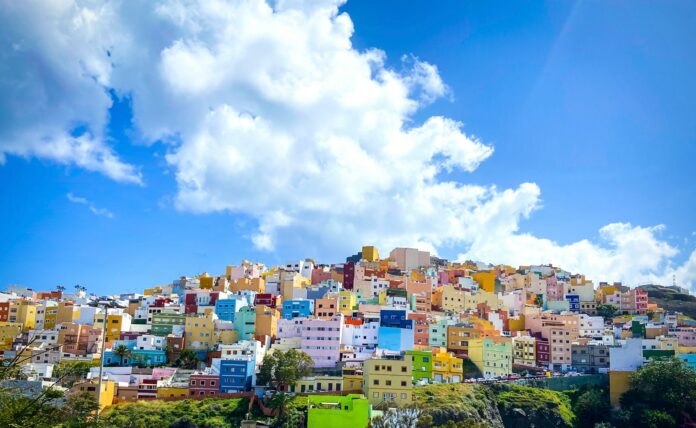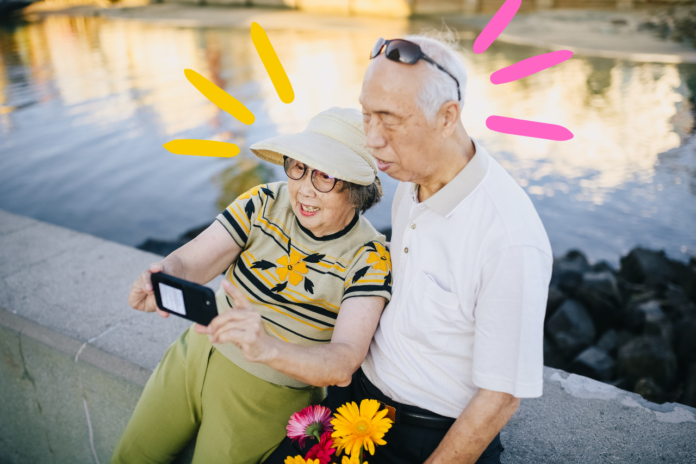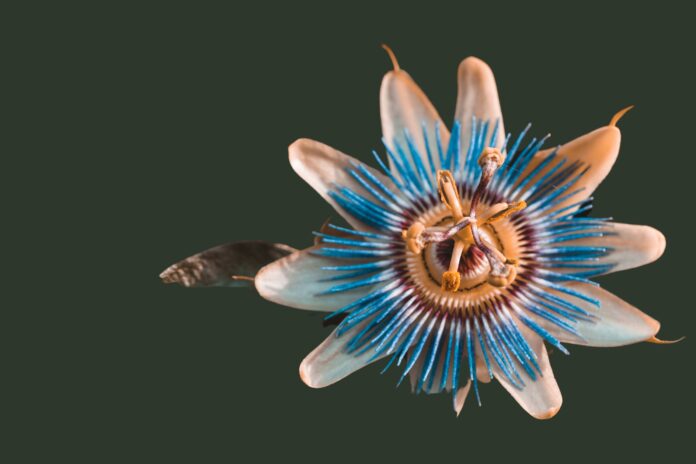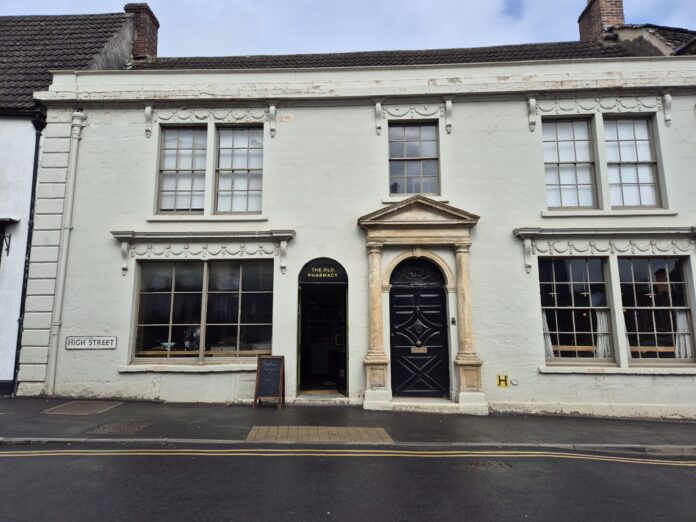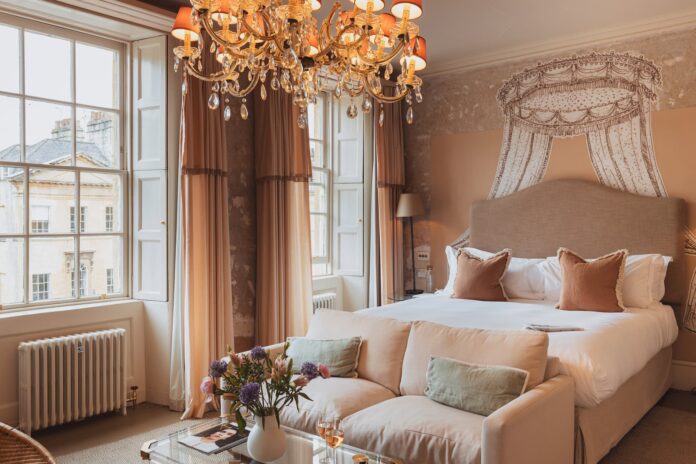Sprawling across a valley dominated by the imposing Volcán de San Salvador, Central America’s most misunderstood capital defies expectations at every turn.
San Salvador, home to over two million souls, pulses with an energy that’s distinctly Salvadoran – a fascinating blend of pre-Columbian heritage, Spanish influences, and ultra-modern ambitions. While international headlines have long overshadowed its charms, those who venture here discover a city in the midst of a cultural renaissance, where world-class museums share streets with pupuserías, and coffee culture reaches heights that would make any barista weak at the knees.
This is a capital that refuses to be defined by its past. In neighbourhoods like San Benito and Escalón, sleek galleries and farm-to-table restaurants have transformed once-quiet residential streets into Central America’s most exciting culinary scene. Meanwhile, the historic centre, long avoided by locals and tourists alike, is experiencing a dramatic revival with restored art deco buildings housing everything from craft breweries to contemporary art spaces.
The city’s relationship with its volcanic setting adds another layer of drama – the looming peaks serve as a constant reminder of nature’s power while providing easily accessible escapes into cloud forests and coffee plantations.
While El Salvador’s Pacific beaches and heritage towns deserve their acclaim, San Salvador rewards urban explorers with authentic experiences largely untouched by mass tourism. Here, you’ll find yourself the only foreigner at a neighbourhood mercado, discover street art that rivals any global capital, and taste coffee that will ruin you for anything else.
Two days provides enough time to scratch beneath the surface of this complex, compelling city – just be prepared to have your preconceptions thoroughly shattered. The dramatic security improvements of recent years (the country now holds the safest travel rating from the U.S. State Department) mean visitors can focus on what matters: exceptional food, culture, and hospitality.
Neighbourhood Know-How: Where To Stay In San Salvador
Firstly, let’s deal with your anchor for your weekend break here, your launchpad, your roof…
When traveling to San Salvador, choosing the right neighbourhood makes all the difference between an enjoyable stay and a stressful one. The city’s sprawling nature and varying safety levels mean location matters more here than in many Latin American capitals.
San Benito emerges as the clear winner for most visitors. This affluent district combines safety, walkability, and proximity to the best restaurants and nightlife. Hotel Mirador Plaza in the heart of San Benito offers modern rooms and a rooftop pool with volcano views. Despite its business hotel appearance, the weekend rates prove reasonable, and the location allows evening strolls to restaurants and bars without constant taxi dependence.
For boutique charm, Las Magnolias Boutique Hotel in the adjoining Colonia San Benito provides an intimate alternative. This converted Art Deco mansion features just eight rooms arranged around a tropical garden where breakfast is served beneath mango trees. The personal service extends to arranging reliable drivers and restaurant reservations – invaluable in a city where local knowledge matters.
Escalón, slightly northwest of San Benito, offers a more residential feel with equally good dining options. Hotel Villa Florencia Zona Rosa sits on a quiet street but within walking distance of cafés and restaurants. The Spanish-style building might feel slightly dated, but the spacious rooms and genuinely helpful staff compensate. The neighbourhood’s tree-lined streets and local feel provide insight into upper-middle-class Salvadoran life. For those planning to explore El Salvador homes with a view to relocating, staying in this residential area offers valuable perspective on daily life.
Budget travellers might consider the hostels around Universidad de El Salvador, where a young, international crowd creates a lively atmosphere. Hostal Cumbres del Volcán offers both dorms and private rooms in a secure compound with one of the city’s best communal kitchens. The location requires more taxi use, but the savings allow for splurging on experiences.
The historic centre, despite its daytime attractions, isn’t recommended for accommodation. While ongoing revitalisation efforts show promise, the area empties after dark and lacks the restaurants and services that make other neighbourhoods more comfortable for visitors.
For those seeking apartment rentals, the residential areas of Escalón and San Benito offer modern flats with security and parking. Many Salvadorans who’ve emigrated rent their properties to visitors, providing well-equipped bases for longer stays.
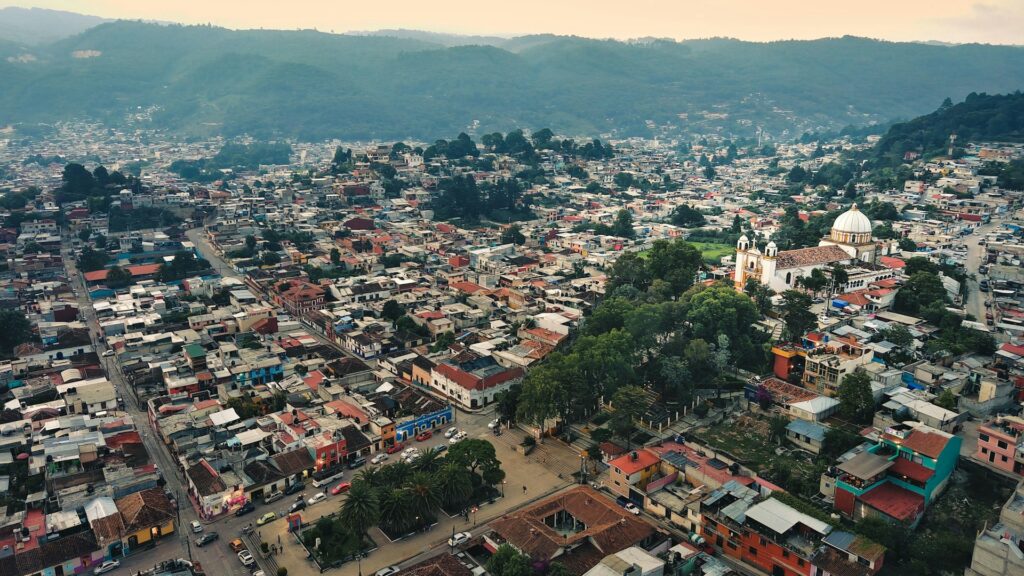
Day 1: Culture, Coffee & Culinary Discoveries
Morning: Historic Heart
Start your San Salvador sojourn at Café La Casona, a branch of the S&P Coffee brand tucked into a beautifully restored building on Avenida La Capilla in San Benito. This local institution opens at 8am, serving exceptional Salvadoran coffee from the Apaneca-Ilamatepec mountain range alongside traditional desayuno típico – scrambled eggs with refried beans, fried plantain, fresh cheese, and cream. The café’s commitment to premium local beans provides the perfect introduction to El Salvador’s coffee excellence.
A ten-minute taxi ride brings you to the magnificent Teatro Nacional, El Salvador’s crown jewel of architecture. Arrive by 9am to join the first guided tour of the day (offered in Spanish and English). This French Renaissance-style theatre, inaugurated in 1917, miraculously survived earthquakes that levelled much of the historic centre. The interior dazzles with its restored 1970s cupola fresco by Carlos Cañas depicting the country’s cultural heritage, alongside Italian marble and intricate architectural details.
Continue to the nearby Catedral Metropolitana, a ten-minute stroll through the gradually awakening Plaza Libertad. This modernist cathedral, completed in 1999, replaced earlier churches destroyed by earthquakes. While the exterior’s stark concrete might disappoint those expecting baroque flourishes, the interior surprises with its soaring spaces and vibrant stained glass by renowned artist Fernando Llort. The tomb of Óscar Romero, the martyred archbishop and now saint, located in the crypt below the nave, draws pilgrims from across Latin America.
Midday: Market Life & Pupusas
Navigate the bustling streets for 15 minutes to reach Mercado Central, housed in a striking yellow art deco building that’s survived since 1950. This isn’t a sanitised tourist market but a working commercial hub where Salvadorans shop for everything from fresh produce to pirated DVDs. The comedores (food stalls) on the second floor serve some of the city’s best traditional fare at rock-bottom prices. Look for any of the busy stalls where local workers queue – a sure sign of quality. Order the pupusas revueltas (mixed pork, beans, and cheese) and watch as the cook pats the corn dough, stuffs it, and grills it to perfection on the comal.
After lunch, walk ten minutes to the Museo de Arte de El Salvador (MARTE), the country’s premier art institution. The permanent collection traces Salvadoran art from pre-Columbian times to the present, but the contemporary galleries prove most compelling. Here, young artists grapple with themes of migration, memory, and identity in ways that illuminate modern El Salvador far better than any guidebook. The air-conditioned galleries also provide blessed relief from the midday heat.
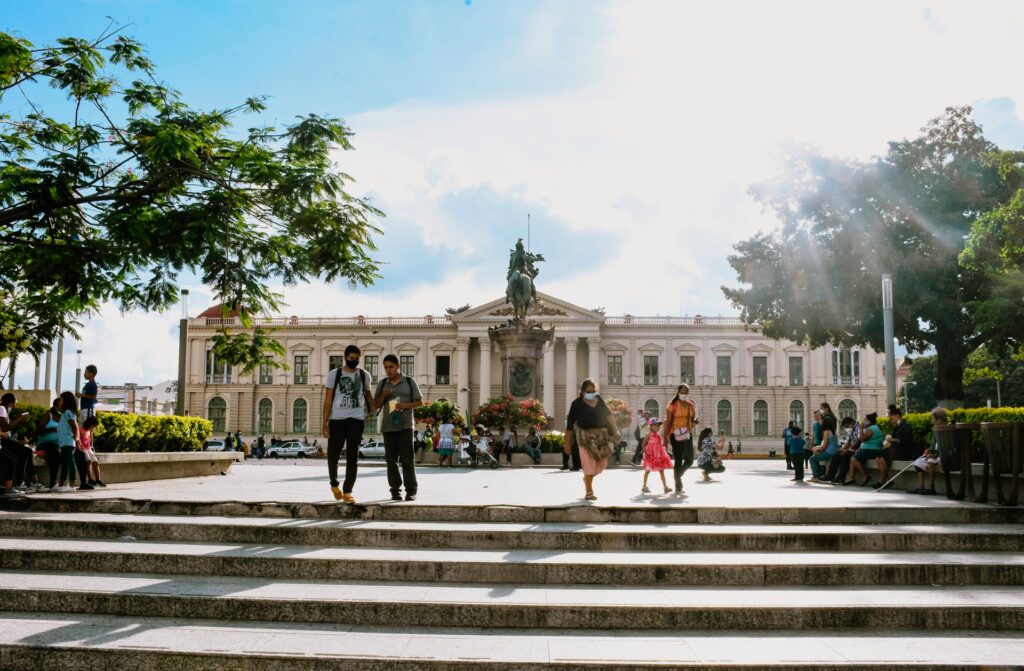
Afternoon: Bohemian Vibes
Take a taxi or Uber (about 10 minutes, $3-4) to Barrio La Zona Rosa in San Benito, San Salvador’s most cosmopolitan district. This neighbourhood has transformed from a quiet residential area into the city’s creative hub, with tree-lined streets hosting everything from vegan cafés to mezcal bars.
Start at Café Fulanos, a third-wave coffee shop where baristas treat Salvadoran beans with the respect they deserve. Their pour-over selection features single-origin coffees from specific fincas, each with tasting notes that would make wine enthusiasts jealous.
Spend the late afternoon gallery-hopping along Boulevard del Hipódromo. Galería 123, established in the 1970s, showcases contemporary Central American artists and has featured exhibitions by international names including Salvador Dalí. The neighbourhood’s street art deserves attention too – entire walls bloom with murals addressing everything from indigenous rights to environmental issues.
Evening: Modern Salvadoran Cuisine
As darkness falls, make your way to Restaurante Hacienda Real in Escalón, about 10 minutes by taxi from Zona Rosa. While the name might suggest tourist-trap traditionalism, chef Eduardo Palacios has revolutionised Salvadoran cuisine here, applying modern techniques to ancestral recipes. The yuca gnocchi with loroco (an indigenous flower) cream sauce exemplifies his approach, while the coffee-rubbed beef tenderloin pays homage to the country’s most famous export. Book ahead and request a table on the garden terrace.
End your evening at Cadejo Brewing Company, El Salvador’s craft beer pioneer, located in Zona Rosa. Their core range includes clever twists on classic styles using local ingredients – try the honey wheat beer made with Salvadoran orange blossom honey. The industrial-chic space attracts a young, international crowd, and the kitchen serves excellent beer-friendly snacks until midnight.
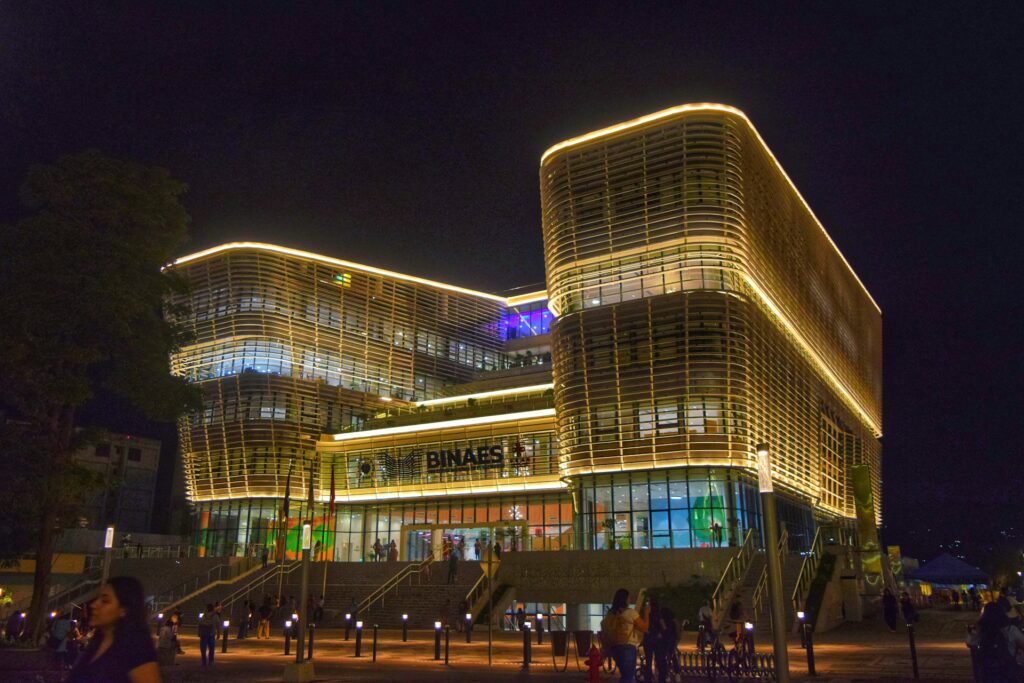
Day 2: Volcanoes, Villages & Views
Morning: Volcano Views
Rise early for breakfast at one of the San Martín bakery locations in the city, where French-trained bakers produce Central America’s finest croissants. Their weekend brunch menu (served from 8am) features both continental classics and Salvadoran twists – the eggs Benedict with pupusa base instead of English muffin shouldn’t work but absolutely does.
By 9am, meet your driver for the 30-minute journey to Parque Nacional El Boquerón, located at the summit of San Salvador volcano (note: closed Mondays). The crater, over a mile wide and 1,800 feet deep, offers spectacular views when morning clouds clear. The main viewpoint requires just a five-minute walk from the car park, but the more adventurous can descend into the crater itself via a well-maintained trail (allow 90 minutes round trip). On clear days, the view encompasses the entire capital, the Pacific Ocean, and neighbouring volcanoes.
Midday: Artistic Escape
Descend the volcano’s northern slopes to reach Panchimalco, a historic town that’s managed to preserve its indigenous Pipil heritage. The 20-minute drive from El Boquerón winds through coffee plantations and small farms. This isn’t a prettified tourist village but a working community where many residents still speak Nahuatl alongside Spanish.
The whitewashed Santa Cruz church, dating from 1725, anchors the main square. Its baroque facade hides an interior where Catholic and indigenous beliefs blend seamlessly – look for the pre-Columbian symbols incorporated into supposedly Christian imagery. The Sunday market (if your timing aligns) brings indigenous vendors from surrounding villages selling everything from medicinal herbs to handwoven textiles.
For lunch, seek out one of the small family restaurants around the main square serving traditional dishes. Here, sopa de gallina india (free-range chicken soup) arrives in earthenware bowls with a side of fresh tortillas and proves exactly what you need after a morning of volcano hiking. Outdoor tables might offer panoramic views across to the San Vicente volcano.

Afternoon: Cultural Immersion
Return to San Salvador (30 minutes) for an afternoon at the Museo Nacional de Antropología David J. Guzmán (MUNA), the country’s premier archaeological museum (closed Mondays, open Tuesday-Sunday 9am-5pm).
The modern building in the Zona Cultural houses an impressive collection spanning from prehistoric times to the present. The Sala de la Religión proves particularly fascinating, explaining how contemporary Salvadoran spirituality blends Catholic, indigenous, and even pre-Columbian beliefs. The museum shop stocks high-quality replicas and crafts from community cooperatives – far superior to typical tourist tat.
If energy permits, the nearby Monumento al Divino Salvador del Mundo offers insight into Salvadoran national identity. This monument to Christ the Saviour, perched atop a globe, serves as the country’s most recognisable symbol. The surrounding Plaza Salvador del Mundo fills with families on weekend afternoons, offering excellent people-watching opportunities.
Evening: Farewell Fiesta
For your final evening, head to Restaurante La Pampa Argentina in Escalón. While it might seem odd to recommend an Argentine restaurant in El Salvador, this institution has been part of San Salvador’s dining scene for over 40 years and offers some of the best steaks in Central America. The Salvadoran-Argentine fusion dishes prove most interesting – try the churrasco topped with loroco chimichurri. The extensive South American wine list provides the perfect accompaniment.
Cap off your 48 hours at one of the city’s rooftop bars offering 360-degree views. As you sip a craft cocktail made with Cihuatán rum (El Salvador’s premium spirit), the twinkling lights below and volcanic silhouettes beyond provide a fitting farewell to this surprising capital.
The Bottom Line
Forty-eight hours in San Salvador reveals a capital that defies every stereotype about Central American cities. From its world-class coffee culture to its thriving arts scene, from volcanic adventures to culinary innovations, the city offers experiences that linger long after departure. While challenges remain – navigation can be complex, and despite dramatic improvements, security awareness is still advisable – the rewards for curious travellers prove substantial.
Those inspired to explore further should consider pairing their capital visit with trips to the heritage town of Suchitoto (one hour north) or the Pacific beaches of El Tunco (45 minutes west). The Ruta de las Flores, a scenic coffee country route through charming mountain towns, makes for an excellent three-day addition to any Salvadoran itinerary.
As El Salvador continues its tourism renaissance, San Salvador stands ready to surprise visitors willing to look beyond the headlines. Just don’t blame us when you find yourself planning a return visit before you’ve even left.
Speaking of that glorious Argentine beef, we’re heading to Buenos Aires next, to try the city’s very best steakhouses. Care to join us?

